Keywords
|
| Universal Remote, PIC Micro controller, Bluetooth, Android, Smart Phones, Network. |
INTRODUCTION
|
| Nowadays, the number of appliance services and their complexity has increased. There is a need to get familiar with the different operations of many remote control manufacturers, which is very confusing. To overcome this problem they have built these remote controller, which is called Universal. Sometimes, such universal remote control has numerous buttons which is not user friendly. There are some researchers who have proposed a remote control for televisions.For the user interface, inconvenient by user need to click the button. They propose universal remote control device for Television and its connected entities. This paper is aimed at designing a device which can control the home appliances through smart phones. An android application is developed in the smart phone which enables us to control device through Bluetooth. A circuit has been designed where the microcontroller is connected to the relay and the Bluetooth device. Once the user switches on/off the appliance through the application developed in the smart phone, the command is received by the Bluetooth which is connected to the pin 26 (receiver pin) of the microcontroller. The microcontroller receives the command and enables the relay which is connected to the appliance to turn it on/off. |
| In existing system, the devices will be controlled by manual operation. A person should go near to the appliance to switch ON/OFF the device. Although many wireless protocols exist they fail to provide compactness and user friendly interfaces to the user.The command is received by the microcontroller and it sends the value to the relay. The relay is connected to port C0 to C3 of the microcontroller. The relay acts as a switch and only pin of the relay is connected to the 230v supply and another is connected to the appliance. Thus depending upon the command sent the appliance is switched on .We have used 16F877A microcontroller. This controller is wide used for experimental and trendy applications owing to its low value, wide selection of applications, prime quality, and easy availableness. It is ideal for applications such as machine control applications, measuring devices, study purpose, and so on. The PIC 16F877 options all the elements that trendy microcontrollers commonly have The figure of a PIC16F877 chip is shown below. |
| The general features include that it can hold only 35 simple word instructions. The clock input is 200MHz while the instruction cycle 200nS in terms of operating speed. Data memory can vary Up to 368×8bit of RAM and a flash memory up to 256×8 of EEPROM and a flash memory of 8k×14.Memory level is Up to 368×8bit of RAM (data memory), 256×8 of EEPROM (data memory) and 8k×14 of flash memory. Pin out compatibility is available for PIC 16C74B, 16C76 and 16C77and it has eight level deep hardware stack. The Interrupt capability is up to 14 sources. Different types of addressing modes such as direct, Indirect, relative addressing modes. It has Power on Reset (POR), Power-Up Timer (PWRT) and oscillator start-up timer. The controller has Low power- high speed CMOS flash memory or the electronically erasable programmable read only memory. It has Fully static design and Wide operating voltage range (2.0 – 5.56)volts The controller has High sink/source current (25mA). Extensive value suiting all standards including commercial and Industrial temperature ranges is also included. The main advantage is its Low power consumption (<0.6mA typical @3v-4MHz, 20μA typical @3v-32MHz and <1 A typical standby). |
| The MAX232 is a dual driver/receiver that includes a capacitive voltage generator to supply TIA/EIA-232-F voltage levels from a single 5-V supply [8]. Each receiver converts TIA/EIA-232-F inputs to 5-V TTL/CMOS levels. The receivers used have a typical threshold of 1.3 V, a typical physical phenomenon of 0.5 V, and can accept ±30-V inputs[8] .Each driver converts TTL/CMOS input levels into TIA/EIA-232-F levels. The main circuit consists of the subsequent components like Resistor, Capacitor, LCD, LED, Power supply, Max232, Relay, Bluetooth HC-04, PIC 16F877,ULN 2003 |
BACKGROUND AND LITERATURE SURVEY
|
| The personal universal controller (PUC) is a remote control device for improving the interfaces to complex appliances. The PUC engages in two-way communication with everyday appliances, first downloading a specification of the appliance’s functions, and then automatically creating an interface for controlling that appliance. The specification of each appliance includes a high-level description of every function, a hierarchical grouping of those functions, and dependency information, which relates the availability of each function to the appliance’s state. Dependency information makes it easier for designers to create specifications and helps the automatic interface generators produce a higher quality result. We describe the architecture that supports the PUC, and the interface generators that use our specification language to generate graphical and speech interfaces. |
A Novel interaction metaphor for personnel environment control.
|
| Ambient Intelligence is the vision of a world, in which we are surrounded by smart devices that help us to organize and master our everyday life. Hitherto, it is the user’s responsibility to manage his personal environment. In such a world, the question will be how the user will interact with his environment and devices integrated there. Existing environment controller solutions do not intuitively support the user by accessing the infrastructures and services of his environment. Often the user must know special device IDs, IP numbers or unique device paths to be able to access a specific one device among a number of available devices. This is especially difficult, if the user is in a complex environment for the first time and he has to concern on his current task. The Personal Environment Controller provides an intuitive and novel interaction metaphor which tightly integrates the user, his media and physical environment. It Integrates the virtual world and its objects (i.e., files) with the physical world and its devices by providing an integrated user interface (UI) and allowing the user for directly manipulate these two worlds. The UI is based on a 3D visualization of the environment, which makes a direct link between the physical objects and their 3D representations within the appliance. This allows the user to easily identify a device that he wants to control based on its location, form and orientation in the 3D Model which correspond to them of the physical world. The user can with only one drag &drop operations move his presentation from his notebook to the beamer and get it started there. By doing so, we are extending the well-known and accepted interaction paradigm of direct manipulation from the virtual computer world to the physical real world. |
Universal interactions with smart spaces in pervasive computing.
|
| A critical challenge facing the pervasive computing research community is the need to manage complex interactions among numerous interconnected computers and devices. In such a pervasive space, a given application's functionalities are partitioned and distributed across several computing devices that are spontaneously discovered and used. In recent years, researchers have devoted much attention to universal interactions with diverse devices in richly networked settings. We can categorize the numerous approaches explored into two groups: universal user interface languages and user interface remoting. We review recent noteworthy efforts for universal interactions using these two approaches. Such efforts aim to raise interoperability in interactive smart spaces by standardizing user interface languages or communication protocols. |
Universal remote control for smart world.
|
| This paper discusses how to build user friendly user interfaces to the smart world. We present the research architecture for controlling Internet services through physical user interfaces, using a mobile terminal and icons placed in the environment. An icon advertises a service that can be started by touching the icon with a mobile terminal. This service activation configures the mobile terminal as a remote control for the service. We have implemented this architecture and designed an icon set. The physical user interface is based on RFID technology: the terminals are equipped with RFID readers and RFID tags are placed under the icons. We present the first prototype applications and the first usability tests that we have carried out. |
A smart universal remote control based on audio-visual device virtualization
|
| With the rapid development of home network technology, sharing multimedia content among AV devices has become easier, however, the operation of these AV devices have become more complicated. These devices display status and related information through on-screen display (OSD) or liquid crystal display module (LCM) display, but the displays have some issues with OSD interference to reception or require users to understand all the symbols on the LCM display. This paper proposes a universal remote control based on AV device virtualization, called V-URC (virtualization based universal remote control), in order to control AV devices V-URC dynamically generates user interfaces, which conform to the current state of devices; this not only simplifies the operation of AV devices, but also eliminates the issues caused by LCM display and OSD-based AV devices In addition, for new AV devices, V-URC can be used directly without the need to go through complicated learning programs or update of firmware. |
APPLICATION LIFECYCLE OF ANDROID
|
| Android was invented in Palo Alto, California by Andy Rubin in October 2003. Android is a Linux-based operating system designed primarily for touchscreen mobile devices such as tablet computers, smartphones. First it was developed by Android, Inc., which was bought in 2005 but initially backed financially. It was unveiled in 2007 along with the founding of the Open Handset Alliance. It is hardware, software, and Telecom Company’s consortium devoted for mobile devices in advancing open standards. October 2008 was the first Android-powered phone sold. |
| Android is open source with permissive licensing which allows the software to be freely modified and distributed by device manufacturers, wireless carriers. Android has a large community of enthusiast developers writing applications ("apps") that extend the functionality of devices. The applications are first written primarily in Java programming language with a customized version. Google releases the code under the Apache License. Statistics says in October 2012, 700,000 apps available for Android, and 25 billion applications are downloaded from Google Play.GNU (Unix Like Operating System) library (glibc) is too big and complicated for mobile phones, so Android is implemented with its own special version of library called as Bionic libc(Library in C).Bionic libc is 200K whereas glibc is more than 400K. |
| A universal remote is a remote control that can be programmed to operate various brands of one or more types of consumer electronics devices. Low-end universal remotes can only control a set number of devices determined by their manufacturer, while mid- and high-end universal remotes allow the user to program in new control codes to the remote. Many remotes sold with various electronic devices include universal remote capabilities for other types of devices, which allow the remote to control other devices beyond the device it came with. For example, a VCR remote may be programmed to operate various brands of televisions. Because programming a universal remote can be a fairly complex procedure, it is most often performed by technically minded individuals, although non-technical users can often operate the remote after it has been programmed. LCD (Liquid Crystal Display) screen is an electronic display module and find a wide range of applications. A 16x2 LCD display is very basic module and is very commonly used in various devices and circuits. These modules are preferred over seven segments and other multi segment LEDs. The reasons being: LCDs are economical; easily programmable; have no limitation of displaying special & seven custom characters. Command register and Data Register are the two registers of this LCD which will display 16 characters per line of two lines and each character is of 5x7 picture element.The command register stores the command instructions given to the LCD. |
BLUETOOTH CONNECTIVITY AND APPLICATION
|
| A command is an instruction given to LCD to do a predefined task like initializing it, clearing its screen, setting the cursor position, controlling display etc. The data register stores the data to be displayed on the LCD. The data is the ASCII value of the character to be displayed on the LCD. Click to learn more about internal structure of a LCD.[9] |
| We have used HC04 bluetooth device. The features of this Bluetooth device are:This design uses Bluetooth chips, V2.0 protocol standards and its Industry-standard?28mm x 15 mm x 2.35mm. Advantages of the volume size is compact, self-efficient on-board antenna, transparent serial port with a variety of Bluetooth adapter, paired Bluetooth mobile phone use, but also the use of a pair of master and slave.The main properties of Bluetooth are Band: 2.40 GHz— .48GHz?ISM Band, l Bluetooth protocol: Bluetooth V2.0 protocol standard, l Power Level: +6dB, l Receiver sensitivity: -85dB l Operating Voltage: 3.3V?5V and l Temperature: -40? ~~ +105?. |
RESULT AND DISCUSSION
|
| This chapter shows the final output scenario of the project. The working of the project is shown in this section |
| The android application which is downloadable is installed in the smart phone and connected to the respective Bluetooth terminal. Once the device is paired with the hardware Bluetooth, the screen indicating the appliance picture available inside the room to which the Bluetooth is connected is displayed. In our project we have connected two lights and two fans to the Bluetooth. |
CONCLUSION
|
| In existing system, the devices will be controlled by manual operation. A person should go near to the appliance to switch ON/OFF the device. Although many wireless protocols exist they fail to provide compactness and user friendly interfaces to the users.This paper proposes a universal remote control using Smart phone. User can control appliances easily by his Smartphone via Bluetooth .The smart phone, which is getting more and more powerful, always beside us, be online, and personal. As a result, the extension of smart phone, our system made up with it. We provide simple user interface, rather than the many buttons of the universal remote control we have seen before. |
Tables at a glance
|
 |
| Table 1 |
|
| |
Figures at a glance
|
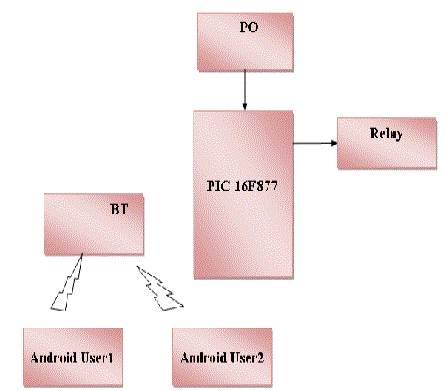 |
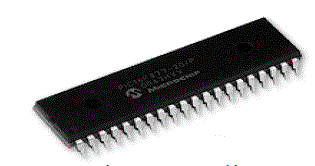 |
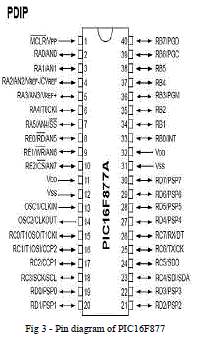 |
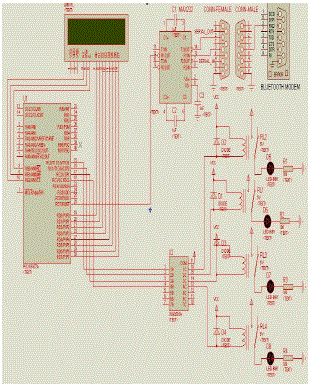 |
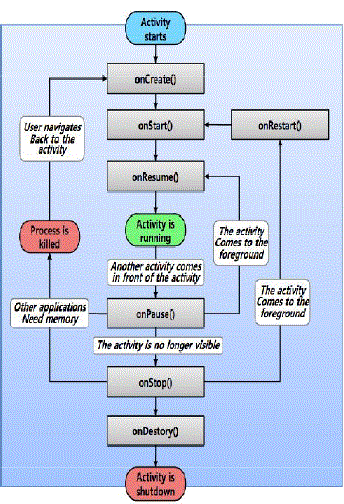 |
| Figure 1 |
Figure 2 |
Figure 3a |
Figure 3b |
Figure 4 |
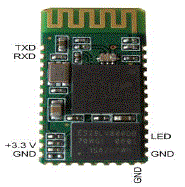 |
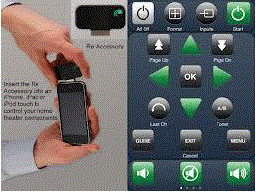 |
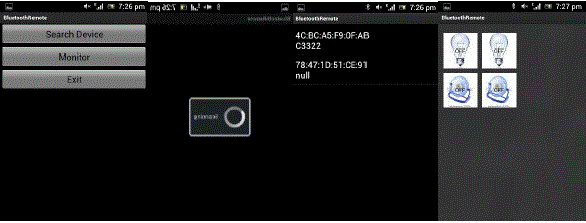 |
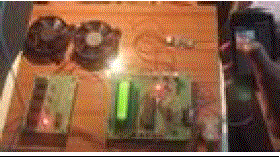 |
| Figure 5 |
Figure 6 |
Figure 7a |
Figure 7b |
|
| |
References
|
- Jeffrey Nichols Carnegie Mellon University, P., PA, et al. Generating remote control interfaces for complex appliances. In proceeding UIST’02 Proceeding of the 15th annual ACM symposium on user interface software and technology 2002. New York, NY, USA
- Shirehjini, A.A.N., A novel interaction metaphor for personal environment control: direct manipulation of physical environment based on 3Dvisualization. 2004. 28(5): p. 667-675
- Choonhwa Lee, S.H., and Wonjun Lee, Universal interactions with smart spaces in Pervasive Computing, IEEE 2006 p. 16 – 21
- JukkaRiekkil, I.S., and Mikko Pyykkonen2. Universal Remote Control for the Smart World. In UIC ’08 Proceeding of the 5th internationalconference on Ubiquitous Intelligence and Computing 2008.Berlin, Heildelberg :Springer-Verlag Berlin, Heidelberg 2008.
- Hsien-chao Huang, T.-C.L., and Yueh-Min Huang, A Smart Universal Remote Control based on Audio-Visual Device Virtualization.Institute of Eiectrical and Electronic Engineers,2009.55:p. 172-178.
- Laehyun Kim, W.P., Hyunchul Cho and Sehyung Park, A Universal Remote Control with Haptic Interface for Customer Electronic Devices,in IEEE Transactions on Consumer Electronics 2010. P. 913-918
- Hyoseok Yoon, W.W., Design and Implementation of a Universal appliances Controller based on Selective Interaction Modes. ConsumerElectronics, IEEE Transactions on November 2008 54(4): p. 1722-1729
- NurzhanNurseitov, M.P., Randall Reynolds, Clemente Izurieta. Comparison of JSON and XML Data Interchange Formats: A Case Study. InISCA 22nd International Conference on Computer Application in Industry and Engineering. 2009. San Francisco,CA.
- R.Paul Morris, M., IEEE, and Julie J. Tomlinson, A Mobile Device User Interface with a Simple, Classic Design. Consumer Electronics, IEEETransactions on 2008 54(3): p. 1252-1258
- Zhiqiang Wei, X.N., DongningJia Research on Software Reuse of User Interface for Mobile Computing Devices Based on Xml, in Software Engineering and Service Sciences (ICSESS), 2010 IEEE International Conference 2010: Beijing p. 146- 149
|